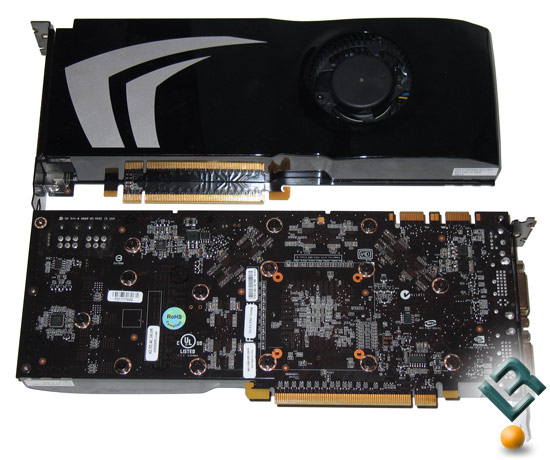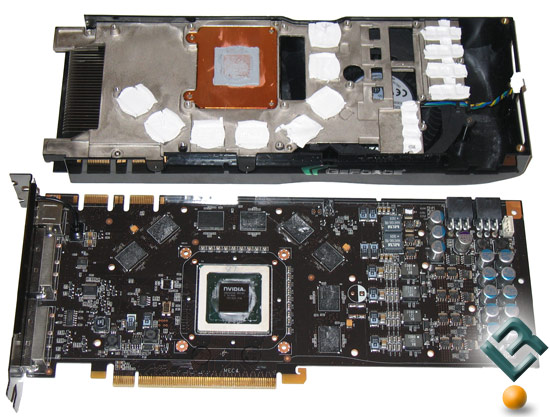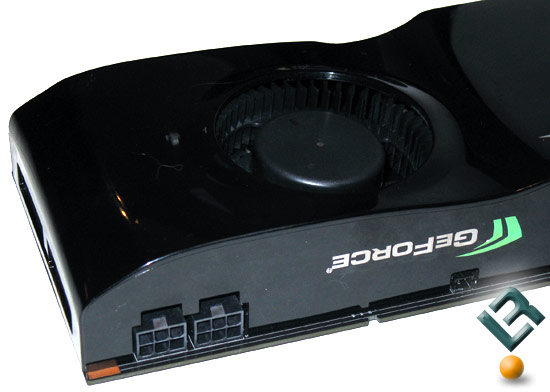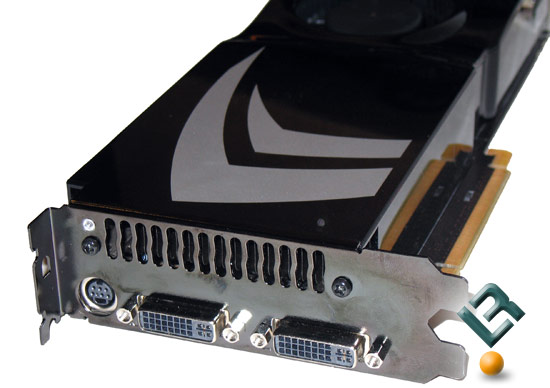ATI Radeon HD 4850 Versus NVIDIA GeForce 9800 GTX+
The GeForce 9800 GTX+ Video Card

Just looking the front and rear of the two GeForce 9800 GTX+ graphics cards not too much looks different from an ordinary GeForce 9800 GTX. Don’t be fooled though as this card is really a GeForce 9800 GTX+, which is a card that NVIDIA claims will be the only card that offers fantastic 3D performance, high-fidelity physics, and world class GPU computing for value conscious gamers. That is a big claim to make, but we will see how it holds up during testing.

With the heat spreader removed the new 55nm core can be seen along with the Hynix memory ICs.

The GeForce 9800 GTX uses a dual-slot design that requires two 6-pin PCIe power connectors for proper usage. If power is not properly hooked up to the GeForce 9800 GTX the video card will sound an alarm and you will definitely hear it. When it comes to power supplies a single GeForce 9800 GTX, needs at least a 450-watt power supply unit for proper operation.
The GeForce 9800 GTX also provides native support for HDMI output, using a certified DVI-to-HDMI adaptor in conjunction with the built-in SPDIF audio connector. This solution differs from ATI by the fact is requires an audio connection from the motherboard or sound card to the video card. Both ATI and NVIDIA solutions have the outgoing audio going through the HDMI cable to the TV or receiver, but only NVIDIA needs internal connections to make this happen. The SPDIF audio connector can be seen just above the LR watermark in the above image.

On the rear of the GeForce 9800 GTX one will one will find the usual dual dual-link, HDCP-enabled DVI-I outputs for connection to analog and digital PC monitors and HDTVs, a 7-pin analog video-out port that supports S-Video directly, plus composite and component (YPrPb) outputs via an optional dongle.

Comments are closed.